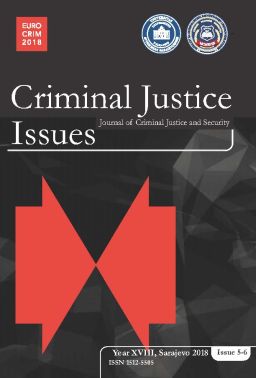“NO MATTER WHAT REHABILITATION OR TREATMENT YOU GET... THERE IS ALWAYS POSSIBILITY.”: AN EXAMINATION OF THE RISKS AND DANGEROUSNESS POSED BY CHILD SEX OFFENDERS FROM THE PUBLIC’S PERSPECTIVE
“NO MATTER WHAT REHABILITATION OR TREATMENT YOU GET... THERE IS ALWAYS POSSIBILITY.”: AN EXAMINATION OF THE RISKS AND DANGEROUSNESS POSED BY CHILD SEX OFFENDERS FROM THE PUBLIC’S PERSPECTIVE
Author(s): Lauren STEVENSSubject(s): Behaviorism, Criminology
Published by: Fakultet za kriminalistiku, kriminologiju i sigurnosne studije Univerziteta u Sarajevu
Keywords: Rehabilitation; Community Reintegration; Child Sexual Offenders; Public Perspective; Explanatory Sequential Mixed Methods;
Summary/Abstract: Child sexual victimisation is considered as one of the most detrimental and seemingly ‘unforgivable crimes against humans, which often results in these offenders becoming socially distant and commonly dehumanized, stigmatised, shamed and socially excluded in society. These horrendous crimes provoke negative attitudes from the community that reinforce the segregation between rehabilitating offenders and the community. Yet, it is the community that is a key component to any successful reintegration or rehabilitation in the community setting. To fully understand the complexities of public perception and the implications it has for criminological research and community-based reintegration efforts; it is necessary to understand the community’s perception of risks posed by these offenders. Also, to identify the characteristics that are associated with heightened perception of risk, suggest ways of bridging the gap between offender and the community to encourage successful re-integration, while identifying different lines of inquiry to reduce child sexual victimisation in the first instance. Reflecting upon a mixed methods approach to identify the public’s perception of risk using both an online questionnaire and semi-structured interviews, this paper draws upon the public’s preference to prevention tactics rather than intervention strategies within the community setting. This paper calls for an alternative focus to crimes against children, its offenders and criminal justice responses to these atrocities. Prevention is better than intervention. We should invest in prevention methods similar to those in Germany and the Netherlands such as, self-referrals for individuals who acknowledge a problematic behaviour before it becomes a criminal offense.
Journal: Kriminalističke teme – Časopis za kriminalistiku, kriminologiju i sigurnosne studije
- Issue Year: XVIII/2018
- Issue No: 5-6
- Page Range: 337-361
- Page Count: 25
- Language: English

